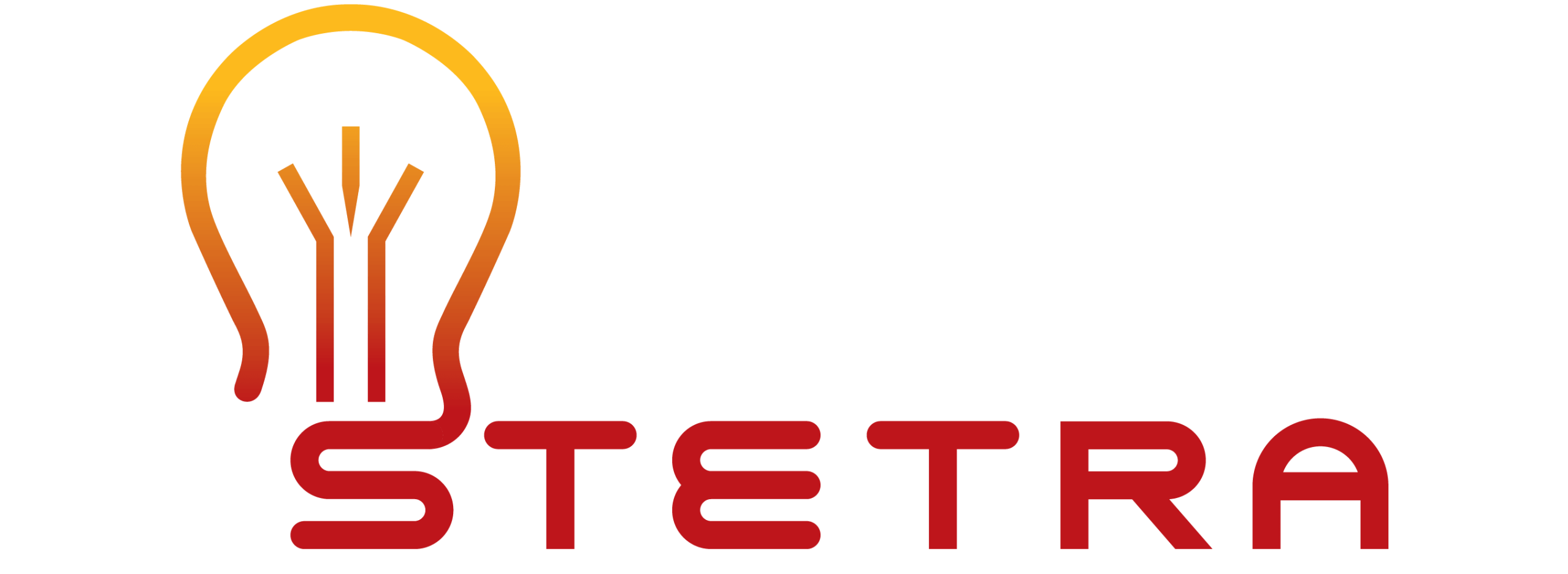This article describes all of the requirements that should be considered when doing a photometric plan for indoor and outdoor tennis fields. There are several steps that should be fulfilled in order to have professional lighting.
Standards for Tennis Lighting
According to the European standards for sports fields lighting EN 12193:2019, first, we should define which category will be our tennis field. There are 3 categories and there are different requirements for each category. The table below is shown the minimum requirements for each category. This table is for European standards in lux but it same or very similar to USA standards. Bellow categories are for outdoor and for indoor tennis fields.

Planning the lighting poles
As a general rule, two poles on each side placed on 10-12m for the two tennis fields is enough. But from my experience, it can go 8-9m from the center. The system with 3 poles on each side 14m apart can be used If there are required higher demands. Three lights setup can be used if fields are required for TV broadcasting where vertical lighting should be very bright or the field is for National or International competition
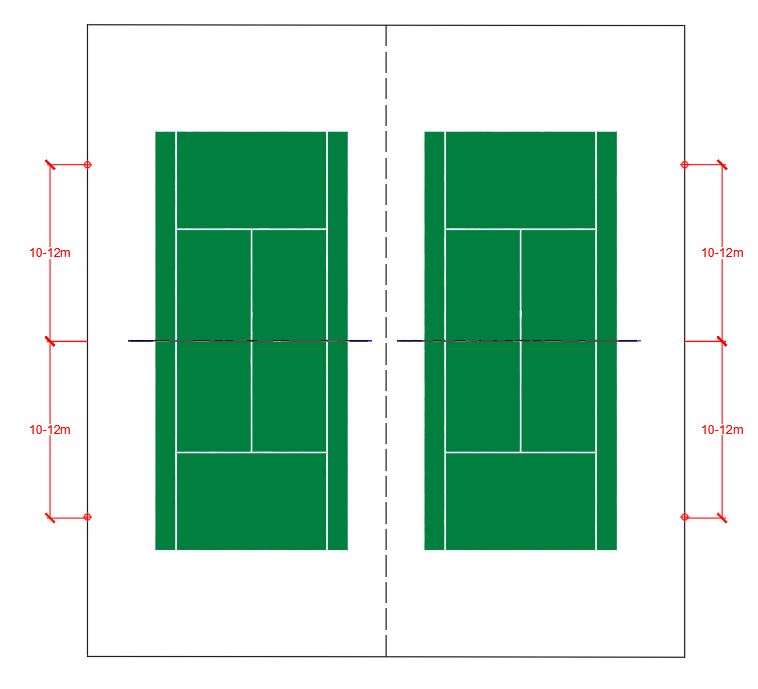

Hight of the poles
Hight of the poles is a very important factor that if it is wrong can influence the quality of the lighting, glare, light trespass and etc. Choosing the right height depends on the distance of the pole to the center of the field. Usually, pole heights are 12m or 14m but it can go as low as 8-10m to 17m.
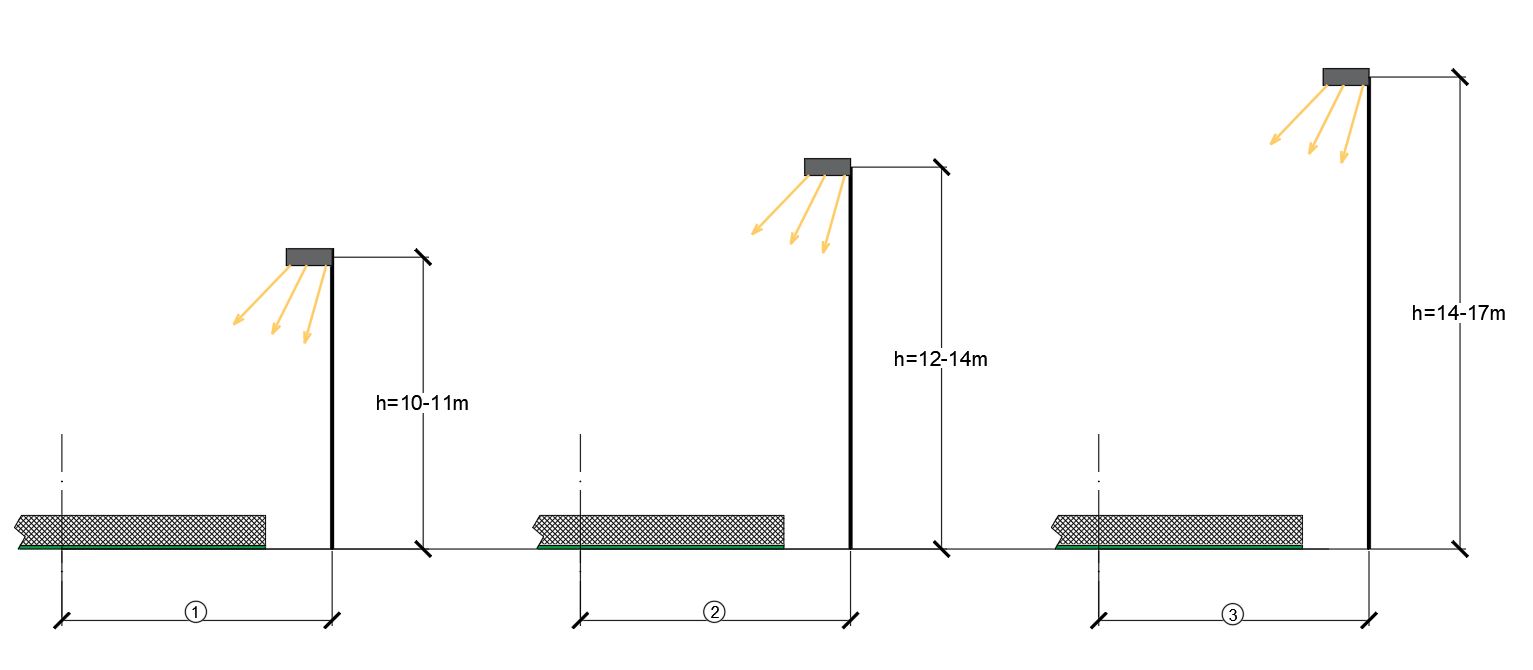
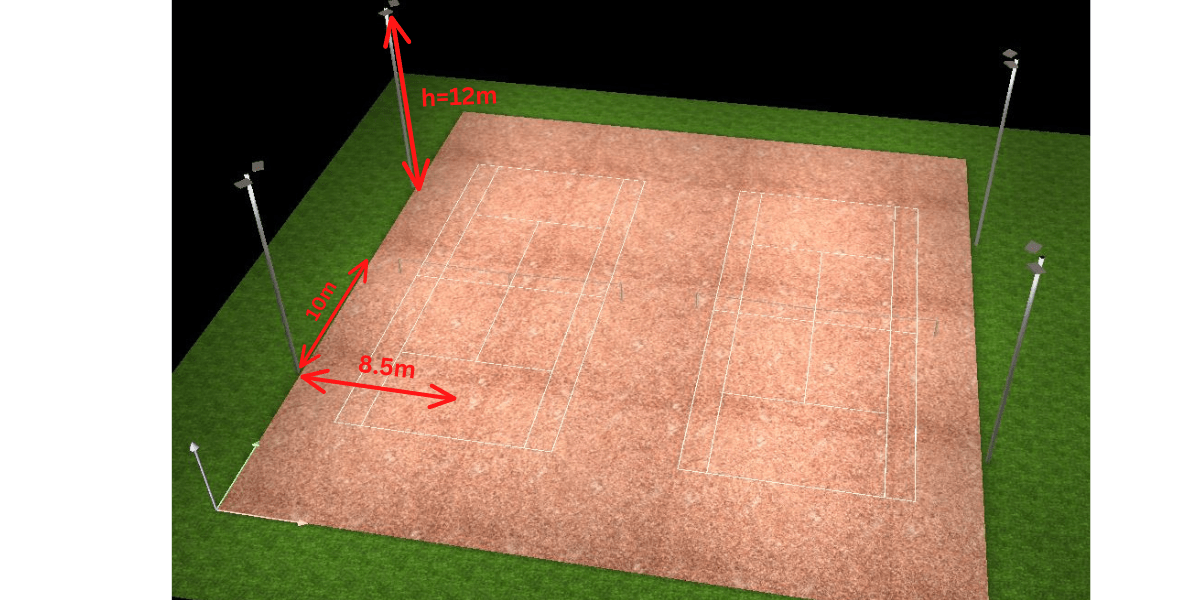
Image 4 is showing a pole configuration with 12m high poles placed 10m from the center with 8.5 distance from the middle of the field.
Lighting for Indoor Tennis
Indoor tennis is usually in special baluns where lights can be up on the construction lighting downward and also can be mounted on the small poles 1-1.5m lighting upward and we have lighting from the reflection of the balun.

Most important for indoor tennis is to consider good protection against glare. The best solution for this is to use asymmetrical beam light and be mounted as far as possible from the sidelines, image 5 (last image). In that way will not have glare into the field area. Another solution can be used if we have less asymmetrical beam or even a symmetrical beam to arrange the lights more toward the center of the field. However, we need to ensure that the lights are with a good shield to ensure not to exide the glare.
What lights should we need for Tennis?
This is a very important part when planning the tennis lights. Good LED fixtures that will fulfill all of the requirements in table 1 with less energy consumption are not an easy task. The wattage for the fixtures typically will vary from 650W to 1400W range but more important is the lumen output with less wattage or to have better efficiency. Nowadays the efficiency of the lights very from 110-160lm/W.
Another important factor is choosing the light beam of the fixtures. There are lots of beam angles from narrow beams like 10-15 degrees to wider beams like 40-60 degrees. Regarding the distribution of the light beam, there are symmetrical and asymmetrical lights. For smaller fields without tribune, it is best to use an asymmetrical beam which will distribute the light further way without tilting and will not produce glare. If there is a case like a large stadium with tribunes and the lights are far way from the middle of the field then it used symmetrical beams.
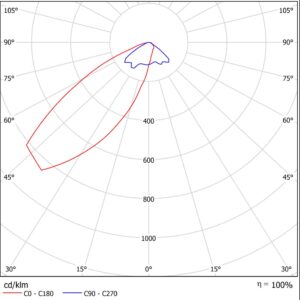
Photometric report for Tennis fields
Before starting the installation of the poles and lights it is essential to have a very good and professional photometric plan. This plan will tell upfront with desired setup of poles and lights are we fulfilling all of the requirements in Table 1. This can be small but a very important investment compared to the overall price of the tennis field lighting and can save us lots of money and time. If we don’t have a photometric plan or we have unprofessional with many mistakes then we are risking having lots of problems on the field. This can produce a lot of readjustments that take a lot of time and energy.
The photometric report is done with professional lighting software like Dialux 3.14, AGI32, Relux, and others software, for example, some lighting companies have their own software.
Photometric grid
For calculating the light levels of the field is essential to consider the right positions of the measurement points. The next image shows showing positions of the measurement points.
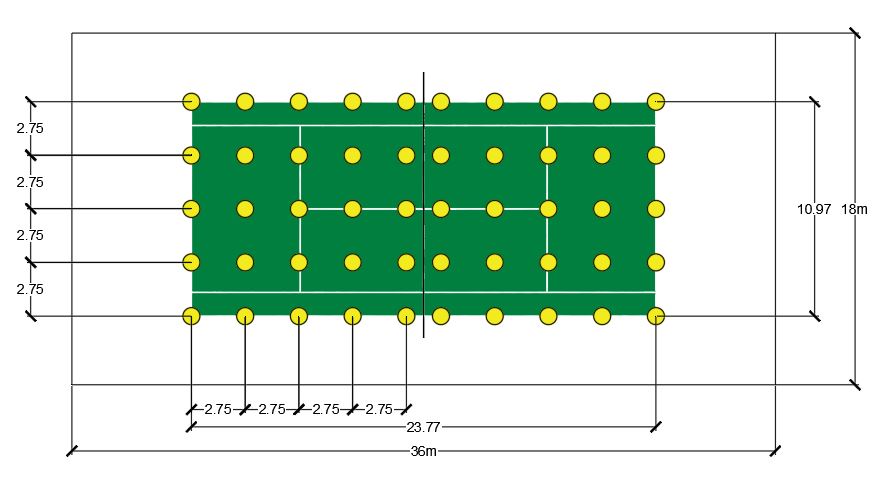
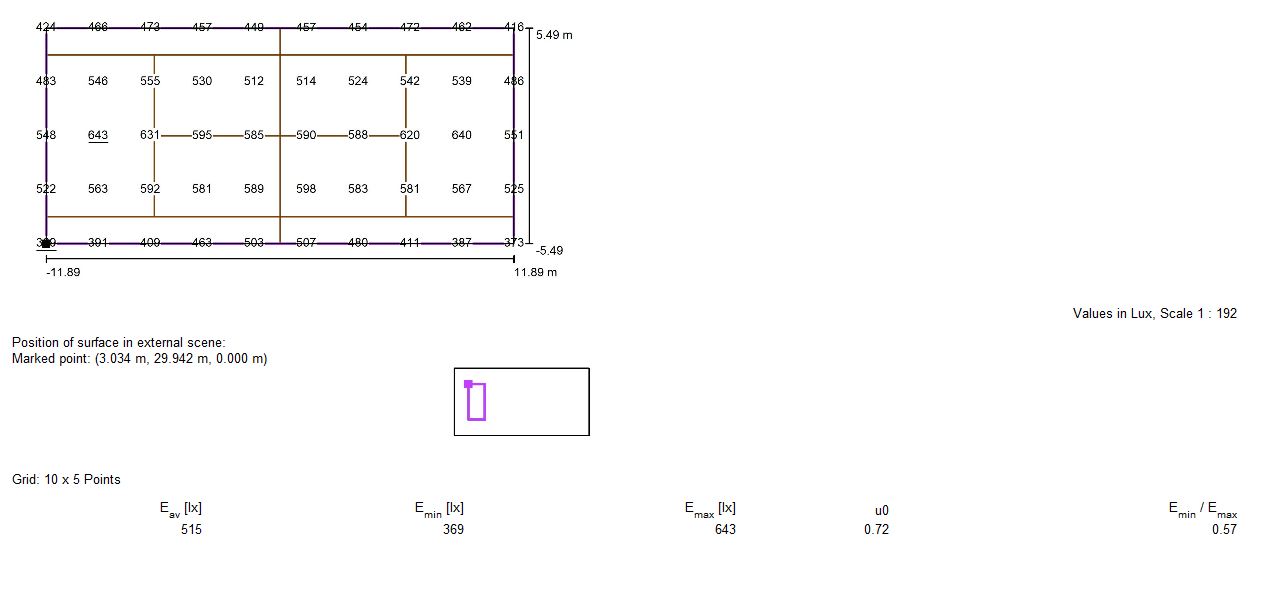
80 % RULE
An important factor is to ensure that the three points painted in orange outside of the playing field need to be in 80% of the points on the baseline. On the bellow, the image is showing 3 points per side color in orange that need to be at least 80% from the base points.
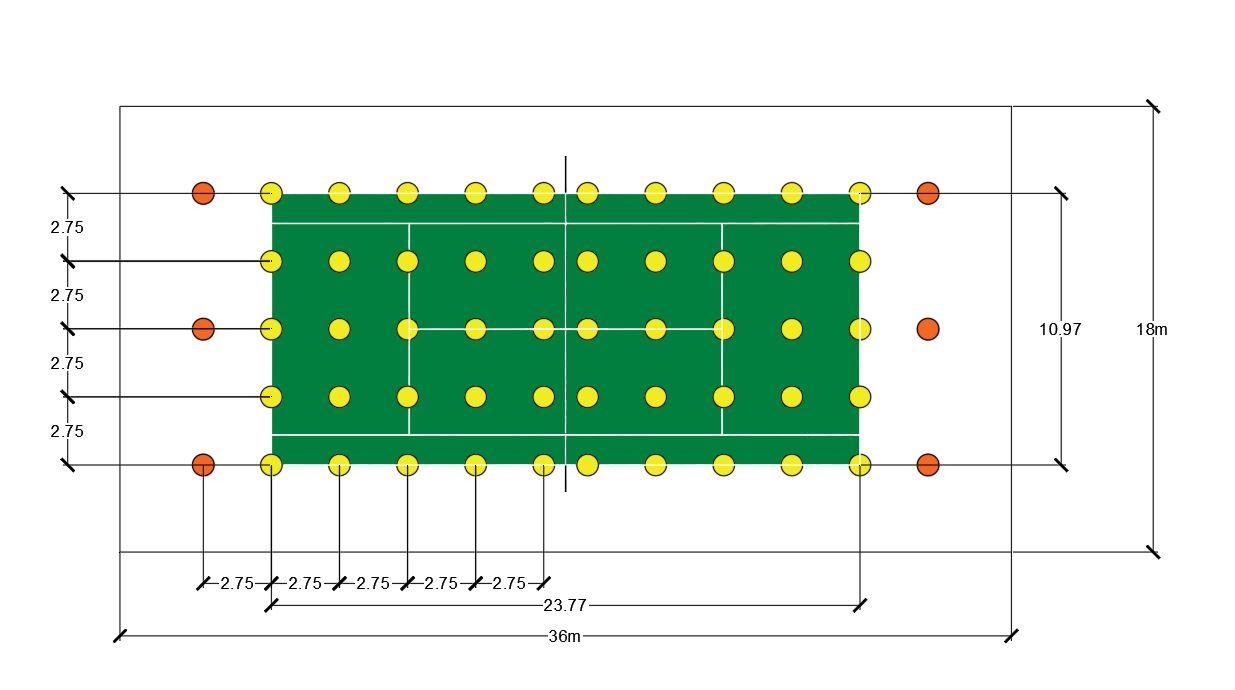

SHOWING RESULTS IN THE ISO COLORS
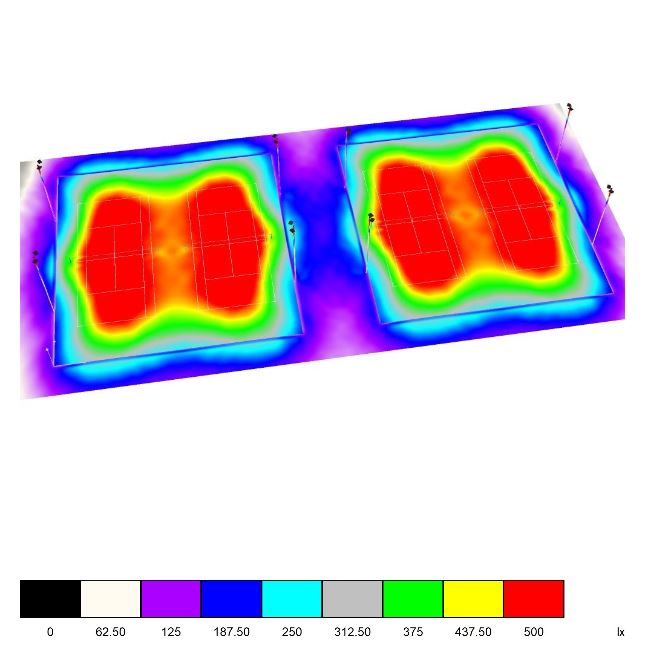
GLARE CALCULATION
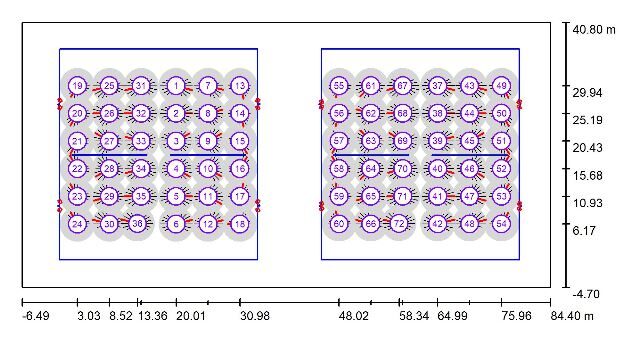
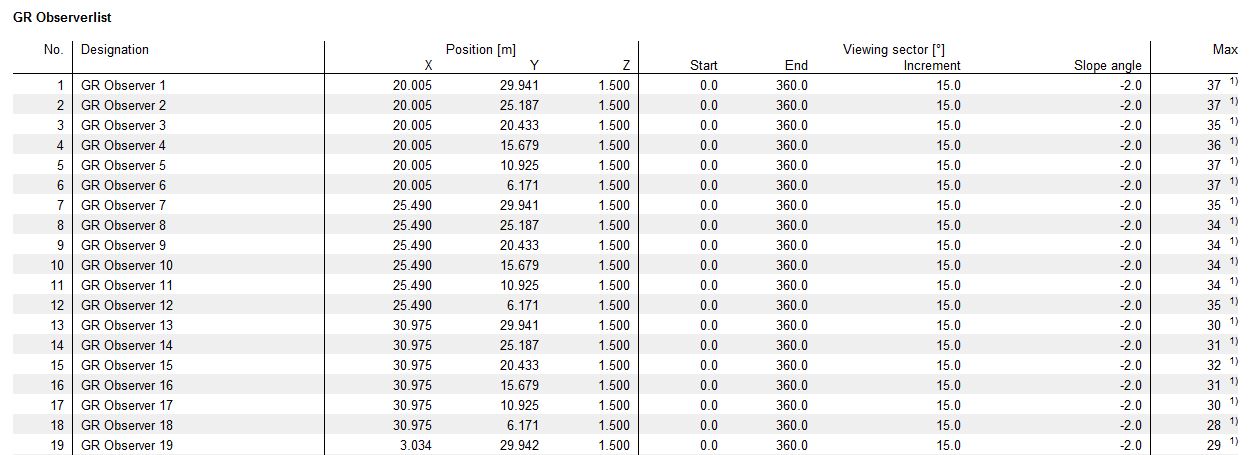
Indoor Tennis hall – Project Example
Bellow images is showing tennis and Babington hall that needs light improvement. Before upgrading the fields have 20 x 400W MH lights per field, there are 4 fields so a total of 32KW, and current light levels are 750 lux with uniformity Eav/Emin 0.7. Lights are mounted on 7.5m-6m.
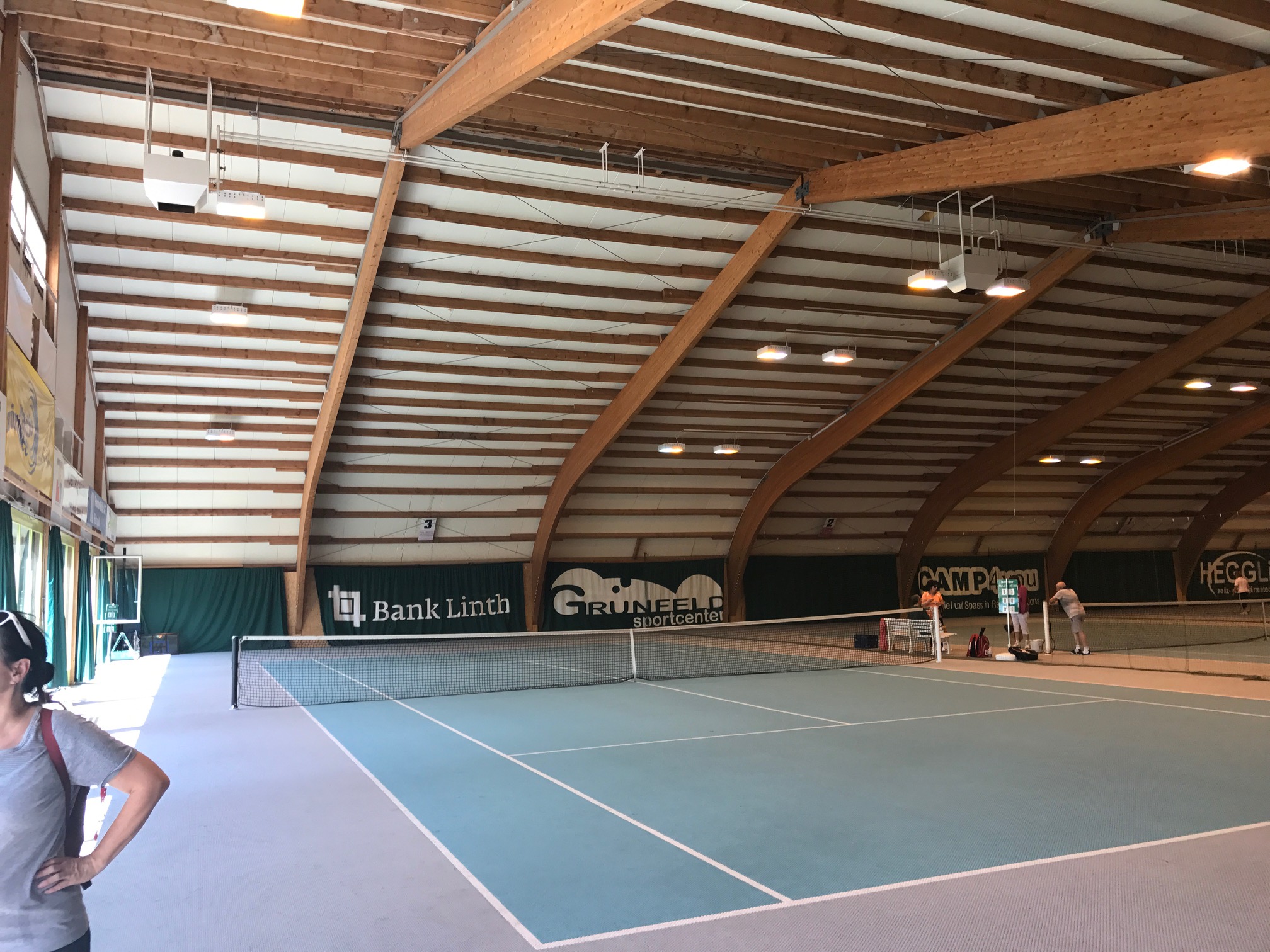
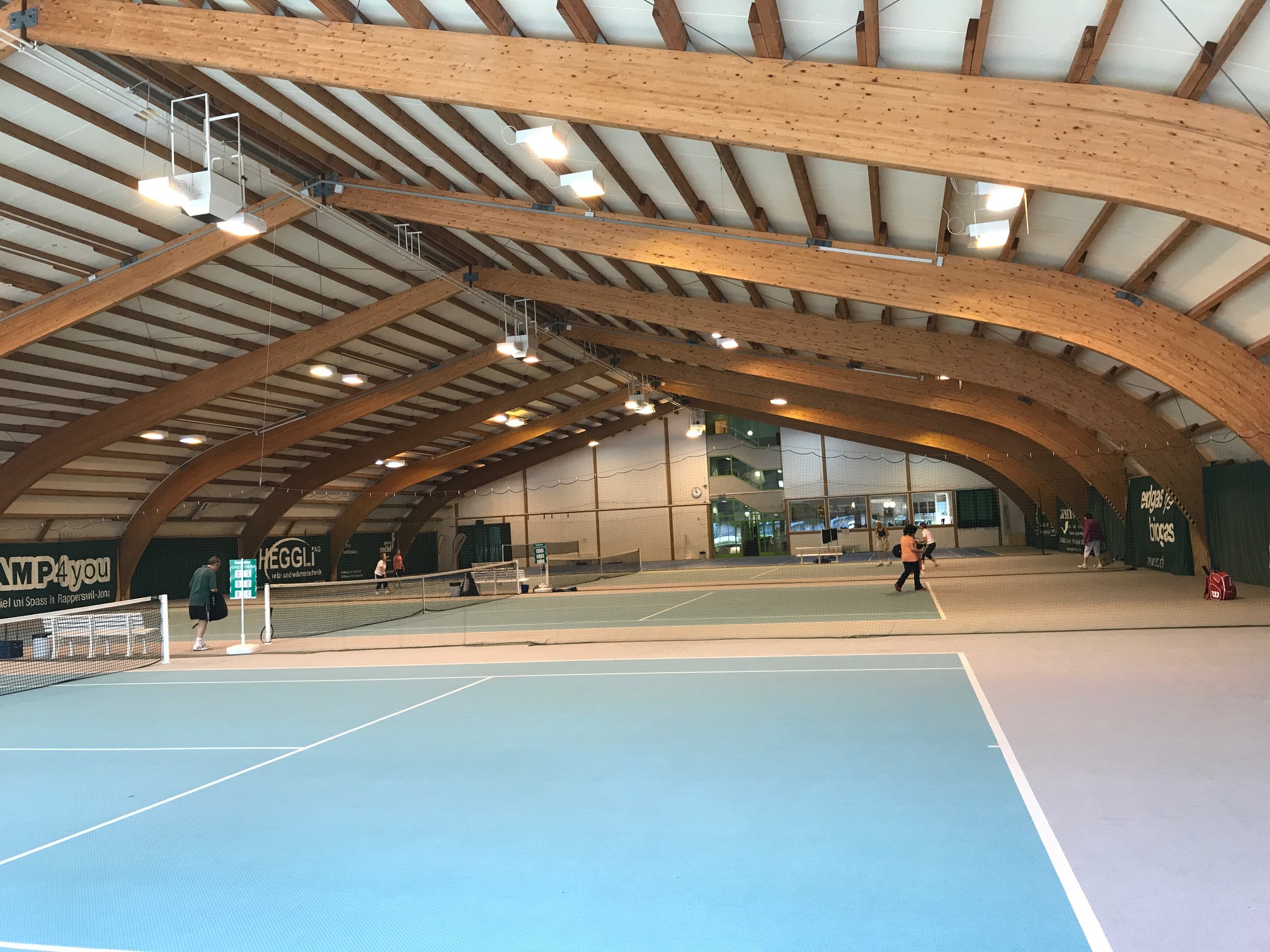

After making the photometric plan and choosing more efficient LED lights from 200W to 600W with glare reduction, we successfully manage to reduce by half the electricity consumption. With the LED light system installed now, we have electricity consumption of 16KW for the hall while maintaining the same and better light levels.

In the next image is shown a photometric report done with Dailux 4.13 software for the tennis hall.
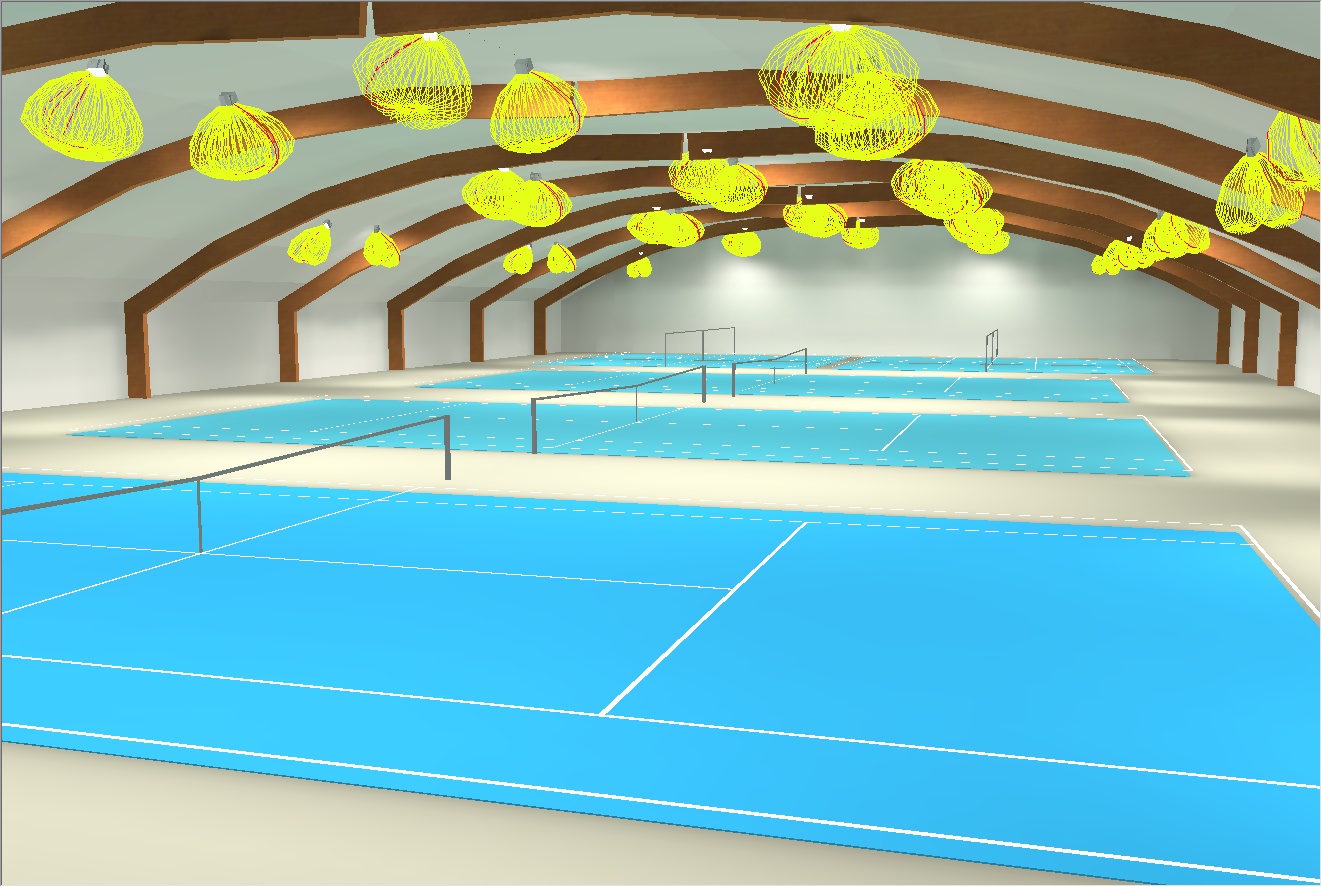
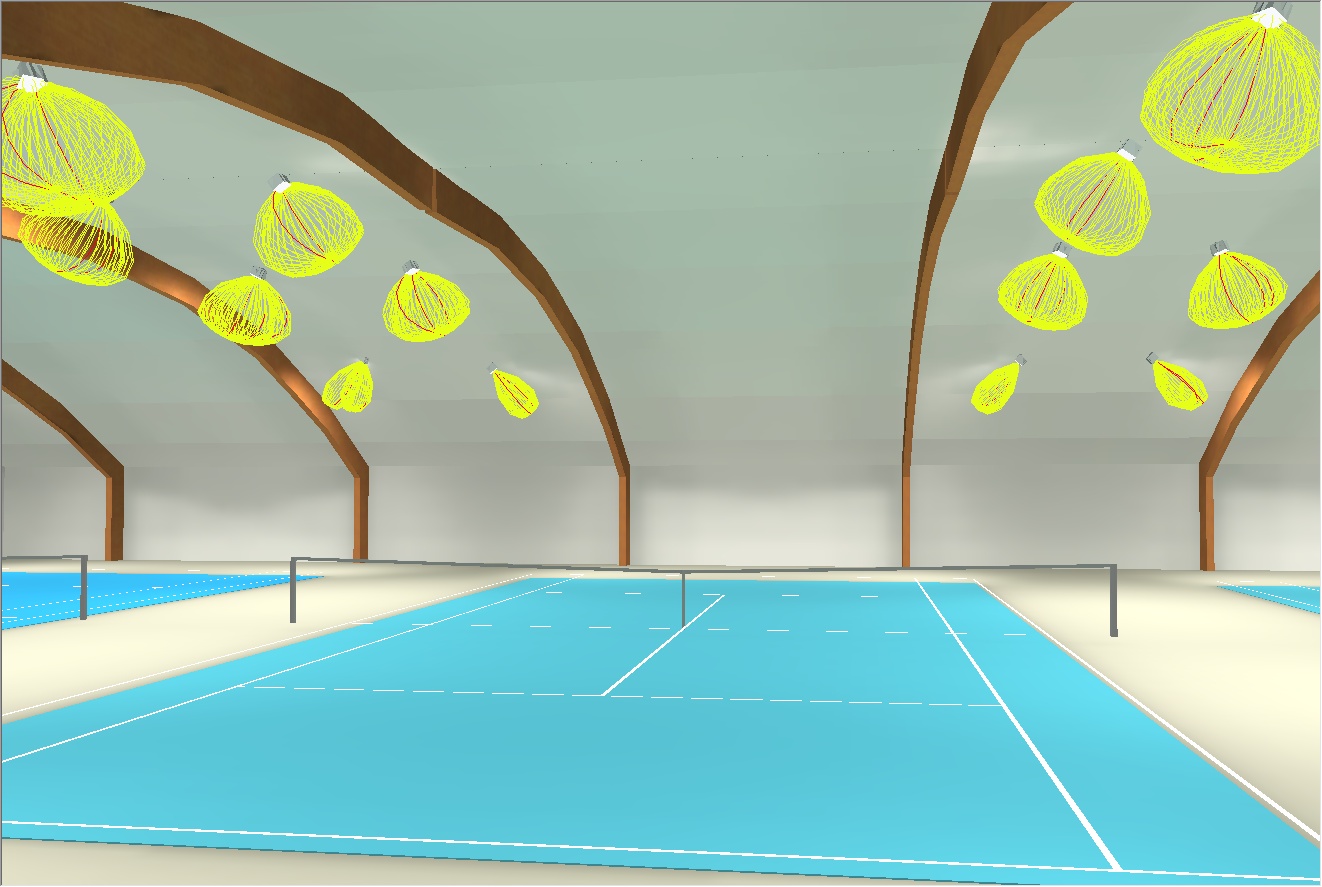
Results from the photometric report with the new lighting setup

Here is the photometric measurement of the one of fields. Measurements are done on a horizontal surface 1m above the ground. We have average lighting of more than 700 lux and also uniformity is above 70%. Roule of 80% which is to have a minimum of 80% lighting in the points outside of the fields is full field as well.
Conclusion
The photometric report can be done by the manufacturer of the lights or by the independent lighting designer. The advantage of the independent lighting designer is the processing speed and also the testing of more light options from different manufacturers in order to come up with the best solution.
